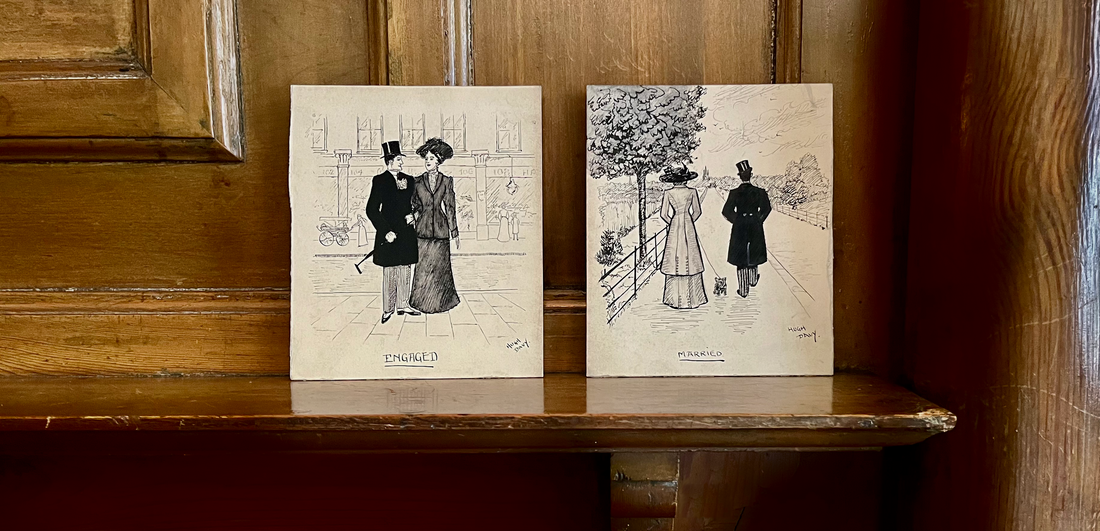
A Very Edwardian View of Society
In June 2023 we acquired a collection of unique drawings and cartoons from the early 1910s, offering a very valuable and insightful commentary on contemporary Edwardian society.
Presumably set outside a Pall Mall-esque private members’ club, Cab, Sir? depicts a cab driver offering his services to a smartly dressed gentleman. With a beard reminiscent of King Edward VII’s, the gentleman depicted is every part a quintessential member of Edwardian high society.
The unfinished structure of the hansom cab serves to draw the viewer’s attention to the dynamics of the interaction. Strengthened by the dialogue written at the bottom of the drawing, the positioning of the figures within the plane of the drawing hints towards their different roles in society – the cab driver is viewed from the front, giving him a permanence and reliability, while the gentleman is viewed in profile as he paces past the viewer, reflecting the speed at which he lives his life.
In both Engaged and Married, Davy once again focuses on dynamics – this time between a man and a woman, who starts as his fiancé and becomes his wife across the span of the two drawings. Engaged has both figures positioned facing the viewer on a pavement; not engaging with the viewer, however, their focus is instead on themselves, showing their mutual enamour for the other.
Unlike most his drawings featured in this article, the environment around the figures plays a greater role within the narrative of the drawings. Although not the focus of the drawing, behind them, scenes of life play out - on the left a woman pushes a pram with two young children in it, suggesting the ideal of the family unit.
While both figures faced the viewer in Engaged, their walking away from the viewer in Married hints towards the impact that their marriage has on their roles within society. The orthogonals formed by the pathway through the park suggest a clear way through life, while the husband and wife have been joined by a dog, creating a sense of ownership and enforced loyalty – which could be viewed as being themes within contemporary society’s approach to marriage.
Returning to the familiar location of a pavement, Why Ireland Waits is the most clearly political of Davy’s drawings. From Emmeline Pankhurst’s formation of the Women’s Social and Political Union in 1903, the suffragette movement in the British Isles had become increasingly forceful; Emily Davison infamously threw herself under the King’s horse at Epsom in 1913, while a concerted bombing and arson campaign was launched in 1912 – however, with the outbreak of war in August 1914, the WSPU switched its focus to the war effort. At the same time, the situation in Ireland had become difficult, with Henry Asquith’s eventual Home Rule Bill being postponed for the duration of hostilities, after having been stuck in the Houses of Parliament for two years.
Two men are boxing on the road, representing the heated debate on women’s suffrage, while a glum figure, with his hands in his pockets, waits on the pavement with a basket, labelled ‘home rule for Ireland’. Davy makes the viewer plays an important role within Why Ireland Waits – their eye is of course first drawn to the action, movement, and energy of the boxing, contrasting with the solitary waiting figure’s lack of dynamism.



